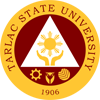Extension as an institutional function started sometime in 1974 under Jose Lacson’s stewardship under Extramural Studies and Extension Services (ESES). Its main program component was Rural Life Development, hence the Institute of Rural Life Development (later renamed as Institute of Rural Life Technology), which offered a four-year secondary agri-based program in 1975. Graduates of the program were encouraged to enter into a two-year vocational course, which was also agri-based, a response to the government's thrust of promoting agricultural development in the countryside under the direction of Prof. Rizal V. Ganiban.
In 1983, the ESES was reestablished as a separate office directly under the College President’s office with Professor Adoracion Y. Nogoy. It offered non-formal education programs that aimed to help the out-of-school youth, continuing education, and special projects to enhance other sectors' effectiveness. The office was also tasked to monitor income generating projects of the college. Believing that the extension is not only for the outside clients, projects like success lessons and evaluation for the faculty and staff were also initiated and taken care of by the office.
When Dr. Ernesto Cosme was appointed as the OIC President of Tarlac State University in 1992, the extension and research were merged into one under the leadership of Prof. Nogoy. When Dr. Alejandro Fernandez was appointed as the president of the University, and the retirement of Dr. Nogoy happened, the leadership was turned over to Dr. Alfredo M. Conte. When Dr. Rodolfo Baking took over the University's presidency in 1995, he separated research from the extension. The research was under the leadership of Dr. Victoria Gengania, while Dr. Conte continued his stewardship as the Director of Extension. This led to the designation of chairpersons to take charge of the various functions and areas of concern and programs and the designation of College Extension Coordinators whose main function is to link the University Extension Office and the different colleges. Extension initiatives were undertaken in collaboration with civic organizations, religious organizations, and local government units. Upon granting level III A status of the University under President Dolores G. Matias's leadership, Dr. Gengania was appointed Vice President for Planning, Research, and Extension in 2002. She filed her one-year Sabbatical leave starting June 2005, and Dr. Conte took over her position as OIC up to his retirement on March 6, 2006.
Upon Dr. Conte's retirement, Dr. Glenard T. Madriaga took over the leadership to continuously extend quality services by sharing the University’s expertise in uplifting the socio-cultural, technological, educational, and environmental condition of the populace towards sustainable development. Under his leadership, the University Extension Manual was approved by the Board of Regents under Resolution No. 39 series of 2008 dated June 9, 2008.
Dr. Madriaga’s appointment as Vice President for Research, Extension, and Development on February 16, 2008, led to Prof. Redemptor G. Toledano's designation, serving then as Cluster Chairman for Consultancy and Special Project, as the Director of UEO. These offices were renamed Vice President for Research and Extension Services and TSU Extension Services Office accordingly. Under the directorship of Prof. Toledano, the services delivered by UESO were organized and clustered under five university extension programs. These include the Community Development Program, which assists in identifying the needs of a community and matching these with the capabilities of the institution; the Industry Development Extension (InDEx) Program, which is aimed at providing services to small and medium enterprises to increase their productivity; the Institution-Public-Private Sector Partnership Program; the Extension Support Services Program (ESSP); and the Student Extension Experience (SEE) Program. It was also during the leadership of Dir. Toledano that the operation of the unit was certified to ISO 9001:2008 Quality Management System. The University Extension Manual was then converted into the TSU Extension Services Guide under BOR Resolution No. 66 series of 2009 dated November 4, 2009. In 2017, the office’s ISO certification was migrated to ISO 9001:2015 version and was maintained until the end of the term of Prof. Toledano in June 2020.
The office has established the Professional Development Services (PDS) Program (2016) through effort and commitment. This income generating unit helps professionals enhance their level of professionalism and integrity by conducting training and consulting activities for requesting parties. In the following year, the BOR approved the establishment of the Regional Center on Resources and Development of Indigenous Peoples (RCRDIP) to provide technical support for protecting and promoting indigenous cultural communities' interests and well-being indigenous peoples.
In 2018, the University's organizational structure changes led to the designation of Dr. Madriaga as Vice President for Administration and Finance, and Dr. Armee N. Rosel as the new Vice President for Research and Extension Services.
Meanwhile, with the resignation of Prof. Toledano as the UESO Director, Engr. Emir Lenard S.F. Sicangco, previously Head of the ESSP Program of UESO (2008-2016) and the Director of Technology Development, Transfer and Commercialization from 2016, assumed leadership as the concurrent OIC Director of the UESO from June 9, 2020, to the present. Under the leadership of Engr. Sicangco, the UESO was renamed into University Extension Services Management Office (ESMO) with the following units: Planning and Monitoring Unit, Project Management Unit, Extension Affairs and Training Unit, and the Extension Studies and Publication Unit.

